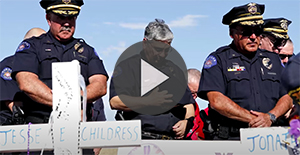The OVC Helping Victims of Mass Violence & Terrorism: Planning, Response, Recovery, and Resources Toolkit was created for communities to prepare for and respond to victims of mass violence and terrorism in the most timely, effective, and compassionate manner possible. Through developing a comprehensive victim assistance plan, the community can respond to mass violence, terrorism, natural disasters, human-caused disasters, emergency crises, and high-profile criminal incidents promptly and more effectively.
OVC's definition of mass violence is an intentional, violent, criminal act that results in physical, emotional, or psychological injury to a sufficiently large number of people, significantly increasing the burden of victim assistance and compensation for the responding jurisdiction. Communities can use this definition as a guide in developing and implementing a comprehensive victim assistance plan to respond to incidents in their communities.
Partnerships & Planning: This phase reviews the steps that are involved in creating and maintaining partnerships, addressing resources gaps, and creating or enhancing assistance protocols.
Response: In the immediate aftermath of a mass violence or terrorism event, law enforcement officials, first responders, victim service providers, and other groups coordinate their activities to ensure a timely and effective response.
Recovery: In this phase, primary agencies must assist victims, first responders, and communities affected by an incident to recover effectively.
Helping Victims of Mass Violence & Terrorism Toolkit
The U.S. Department of Justice Office for Victims of Crime (OVC)—in coordination with the Office of Justice for Victims of Overseas Terrorism and the Federal Bureau of Investigation Office for Victim Assistance—developed the Mass Violence and Terrorism Toolkit to help establish victim assistance protocols, bring key partners together to review existing emergency plans, and to initiate or continue community development plans already in place.







